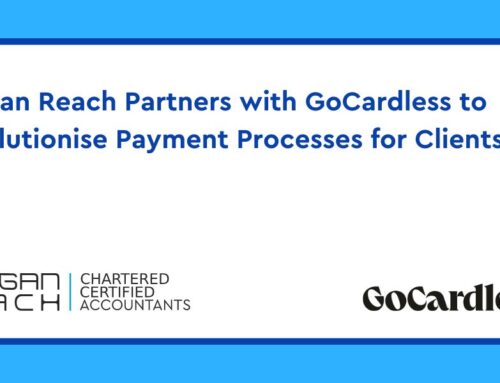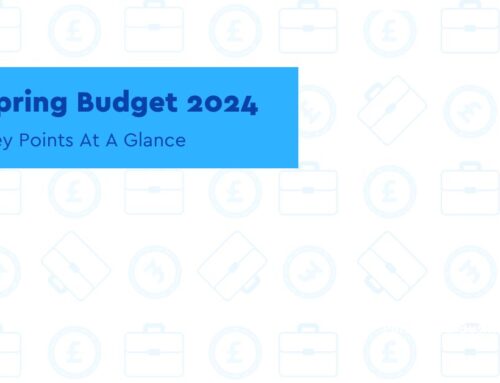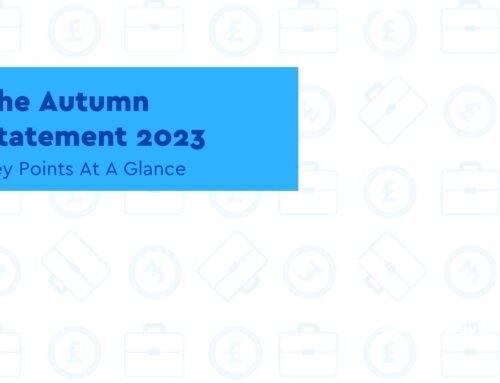News – Employers
Tax codes to use from April 2022
Key Points
- For each employee who will be working for you on April 6 you’ll need to prepare a payroll record
- Employers will also need to Identify the correct tax code – including the correct prefix
The latest guidance from HMRC explains which tax codes employers must change and how to change them, plus which codes to carry forward ready for the new tax year on April 6.
For 2022 to 2023 the basic Personal Allowance will be £12,570 for the whole of the UK. The threshold (starting point) for PAYE is £242 per week (£1,048 per month). The emergency code is 1257L for all employees.
This guidance tells you what you have to do to get ready and when to make the change to tax codes.
Get ready for the new tax year starting on April 6
For each employee who will be working for you on April 6 you’ll need to:
- Prepare a payroll record
- Identify the correct tax code (including the correct prefix, for example, ‘S’ or ‘C’)
- Enter the correct tax code on the payroll record
When HMRC send a new tax code for any of your employees, you’ll receive one of the following:
- A paper form P9(T), ‘Notice to employer of employee’s tax code’
- An internet notification of coding if you’re registered to use our PAYE Online – internet service
To access your online coding notices:
- Go to www.gov.uk/paye-online-log-in and select ‘Sign in’
- From the Business tax account home page, select ‘Messages’ and then select ‘PAYE for employers messages’
- Select ‘View your Tax Code Notices’
- From the ‘Tax Year’ drop down box select the new tax year (2022 to 2023)
Keep this P9X with any new tax codes until you’re ready to set up your 2022 to 2023 payroll. HMRC will not send a new tax code for every employee.
What you need to do before April 6, 2022
Employees without a new tax code
Copy the authorised tax code from the 2021 to 2022 payroll record and continue to use for 2022 to 2023.
Do not copy or carry over any ‘week 1’ or ‘month 1’ markings.
The payroll records for these employees are now ready for the new tax year.
Employees with a new tax code
Keep and use the form P9(T) or other tax code notification with the most recent date on for each employee:
- Scrap any form P9(T) or other tax code notification for the same employee with an earlier date
- Copy the tax code from the form P9(T) or other tax code notification onto your payroll record
- Update any tax codes where you’ve received form P9(T) or other tax code notification after you’ve set up your payroll records
The payroll records for these employees are now ready for the new tax year.
Employees leaving
You do not need to change the tax code for any employee who leaves before April 6, even if you’ll be paying them after April 6. Just use the old tax code.
This does not apply to payments after leaving when you’ve already given an employee a P45. In these circumstances tax must be deducted using tax code 0T, S0T for employees who had an S prefix in their code or C0T for employees who had a C prefix in their code, on a non-cumulative basis.
New employees
If an employee starts between April 6 and May 24 and gives you a P45, follow the instructions at www.gov.uk/new-employee
If you’re an employer who has an agreed exemption from online filing and are operating a manual payroll, follow the instructions in the RT7, ‘Guidance for employers exempt from filing Real Time Information online’.
Manual Payroll
If you have an agreed exemption from online filing and will be operating a manual payroll, continue to use Taxable Pay Tables Manual Method (April 2022). Continue to use Tax Tables A (1993) which have not been changed.
Basic PAYE Tools
If you use HMRC’s Basic PAYE Tools (BPT) to calculate payroll deductions and submit payroll information online, you’ll be able to action this P9X once the new tax year is available in BPT.
This guidance was sourced from gov.uk: https://www.gov.uk/government/publications/p9x-tax-codes
News – National Insurance
National Insurance tax hike to hit UK apprenticeships, warns FSB
Key Points
- The business group has warned that higher employment taxes will discourage businesses from training workers.
- They have also called for the government to reintroduce a £3,000 incentive for businesses to hire apprentices
The Federation of Small Businesses (FSB) has called for the government to scrap its national insurance tax hike amid falling numbers of apprenticeships.
The UK’s largest business group has warned that higher employment taxes will discourage businesses, which pay the majority of national insurance contributions (NICs) for UK apprentices, from training workers. The number of people starting apprenticeships has already tumbled from 500,000 in 2017, before the introduction of the apprenticeship levy, to under 325,000 this year, the group warned.
“By looking again at its approach to NICs, the Government can make a real difference here – directly, by bringing down the immediate costs of taking an apprentice on, and indirectly, by freeing up more funds for recruitment and training at a moment when cash reserves are depleted,” said FSB chair Mike Cherry.
Cherry pointed out that the employment tax hikes are out of kilter with the government’s Levelling Up policy.
In an agenda published last week the government committed to increasing the number of people completing high quality skills training each year by 200,000, driven by 80,000 more people completing courses in the lowest skilled areas.
The FSB called for the government to reintroduce a £3,000 incentive for businesses to hire apprentices and to remove all employer NICs for apprentices in order to spur role creation.
“Small businesses disproportionately hire young people and those from disadvantaged groups when they create apprenticeships, so a targeted reintroduction of the hiring incentive that existed over lockdowns makes sense in the context of the levelling up agenda,” Cherry continued.
FSB’s latest Small Business Index revealed that the amount of firms citing lack of access to appropriately skilled staff as a barrier to growth has risen ten percentage points to 33 per cent this year, underscoring the importance of skills training.
National Insurance tax is due to rise by 1.25 per cent from April 2022 with the government claiming the additional money will be used to fund the NHS, health and social care in the UK.
The policy has faced additional criticism for squeezing incomes at a time when inflation stands at 5.4 per cent, its highest level for 30 years.
This guidance was sourced from BM Magazine: https://bmmagazine.co.uk/news/national-insurance-tax-hike-to-hit-uk-apprenticeships-warns-fsb/
News – Pension
More people eligible to save into a workplace pension
Key Points
- The decision is expected to bring an additional 17,000 savers into AE pension schemes as average earnings rise
- The qualifying earnings band minimum AE contributions are based on has also been frozen for the first time for 2022/23
- This means that earnings between £6,240 and £50,270 will qualify
Thousands of workers will come under the scope of pension auto-enrolment, enabling many to save for retirement for the first time.
The Department for Work and Pensions (DWP) has frozen three important figures relating to who can be auto-enrolled into a workplace pension scheme.
This, combined with rising wages essentially means more people will come under the scope of pension auto-enrolment, providing a “small real terms boost for pension saving”, according to Steve Webb, former pensions minister.
DWP calculates an extra 17,000 people will be brought into the pension system as a result.
Automatic enrolment earnings trigger
In order to be eligible for pension auto-enrolment, workers aged between 22 and State Pension age need to earn at least £10,000 per year from a single job.
DWP has today announced this earnings trigger amount will remain unchanged, as is usually the case.
But employers also need to take note of a second threshold or ‘Qualifying Earnings’ figure which relates to how the minimum contributions are calculated in accordance with the auto-enrolment legislation.
For the 2022/23 tax year, the basic or lower annual earnings limit (Qualifying Earnings) has been frozen at £6,240 for the first time.
This will increase the amount of people who can save for their future as someone earning £6,240 or under is entitled to join a pension scheme. However, the employer doesn’t have to contribute.
An employee earning between £6,240 and £10,000 (the pensionable income) is also entitled to opt-in to the auto-enrolment scheme and the employer must contribute (currently 3%).
Further, DWP has also frozen the higher or upper limit of the Qualifying Earnings band for auto-enrolment for the 2022/23 tax year. This figure will remain at £50,270.
This means anyone earning between £6,240 and £50,270 will qualify for a ‘matched’ employer contribution. An employee will contribute 5% gross (4% net of tax relief) while the firm will pay 3%.
The DWP document stated: “The existing threshold of £10,000 remains the correct level and will not change for 2022/23. This represents a real terms decrease in the value of the trigger. Therefore, as earnings continue to grow, keeping the earnings trigger at £10,000 will bring in an additional 17,000 savers into pension savings when compared to increasing the trigger in line with average wage growth.
“The decision to freeze the AE lower earnings limit this year supports the principle of ensuring that everyone who is automatically enrolled would continue to pay contributions on a meaningful proportion of their income. It is consistent with the government’s ambitions to improve financial resilience for retirement, in particular among low and moderate earners. Freezing the LEL helps ensure pensions savings would be broadly maintained – and slightly increased – compared to last year.”
More pension saving
Steve Webb, partner at consultants LCP, said: “It makes a lot of sense to say that people who earn below £10,000 don’t have to be put in a pension, especially now that the state pension is over £9,000 and set to rise again in April.
“For the lowest earners, the state pension will be their main source of income in retirement. But for everyone else, building up a pension pot more quickly is important. By freezing the floor for Qualifying Earnings, DWP has ensured that as earnings rise this year, a slightly bigger cash sum will go into pension saving which is a small step, albeit on a very long journey, to more realistic levels of pension saving.”
This guidance was sourced from your money: https://www.yourmoney.com/retirement/more-people-eligible-to-save-into-a-workplace-pension/
News – HMRC
HMRC late payment interest rates to be revised after BoE increases base rate
Key Points
- The rate will increase with effect from February 14, 2022 for late quarterly instalment payments
- They are applied to the main taxes and duties, including income tax, NICs, capital gains tax and stamp duty land tax
As interest rates are linked to the Bank of England base rate, the increase in the base rate from 0.25% to 0.5% on February 3, 2022 has triggered an increase in rates for late payments.
HMRC has announced that the rate will increase with effect from February 14, 2022 for late quarterly instalment payments and that late payment interest for other late payments will increase from February 21, 2022.
The rate of interest on unpaid installments of corporation tax liabilities is calculated as base rate plus one, so will increase to 1.5% from February 14, 2022.
The rate of interest for the late payment of other taxes is calculated as base rate plus 2.5, so will increase to 3% from February 21, 2022.
From February 21, 2022
Income Tax, National Insurance contributions, Capital Gain Tax, Stamp Duty Land Tax, Stamp Duty and Stamp Duty Reserve Tax (from October 1, 1999)
Late payment % Repayment %
3.00 0.5
Corporation Tax pay and file
Late payment % Repayment %
3.00 0.5
Corporation Tax Self Assessment, from normal due date
Late payment % Repayment %
3.00 0.5
Inheritance Tax, Capital Transfer Tax and Estate Duty
Late payment % Repayment %
3.00 0.5
Other Corporation Tax Self Assessment interest rates
Interest charged on underpaid quarterly instalment payments
From February 14, 2022 – 1.5%
This article was sourced from gov.uk
HMRC updates cryptocurrency tax guidance
HMRC has updated its crypto assets tax guide to include information on the treatment of decentralised finance (DeFi) lending and staking in proof-of-stake networks.
The new guidance focuses on how a return from lending or staking is taxed depending on whether it is considered capital or income and stresses that crypto investors have to differentiate this when reporting to HMRC.
HMRC also clarified that investors need to distinguish whether their ‘return was earned by the lender/liquidity provider or was the return released from the capital growth of an asset owned by the lender/liquidity provider’.
HMRC noted that because of the complexity of DeFi systems, this may not always be clear, so the department gives some factors for crypto investors to look at when determining their tax status. One of these is whether the return to be received by the lender/liquidity provider was known at the time the agreement was made.
Work out your rental income when you let property
You can claim the property allowance and get up to £1,000 a year tax-free property income.
If you claim the property allowance, however, you cannot claim a deduction for your expenses.
If you let out residential property (a dwelling house) you may be able to claim a deduction for the cost of replacing domestic items such as:
- Movable furniture for example beds, free-standing wardrobes
- Furnishings for example curtains, linens, carpets, floor coverings
- Household appliances for example televisions, fridges, freezers
- Kitchenware for example crockery, cutlery
Replacement of domestic items relief is only available for expenses incurred from 6 April 2016 for Income Tax purposes.
Get In Touch
At Morgan Reach, we understand every business needs a little help now and again-especially when it comes to the financial side of things. Therefore, to help our clients and visitors we endeavour to cover as much of the business news as possible. If you are self-employed or run a business and need assistance and advice on how these news could make a difference to you or your business, feel free to get in touch with the experts at Morgan Reach. Our business growth experts at Morgan Reach will guide you through what support is available for you or your business as well as the latest news that may affect you.







